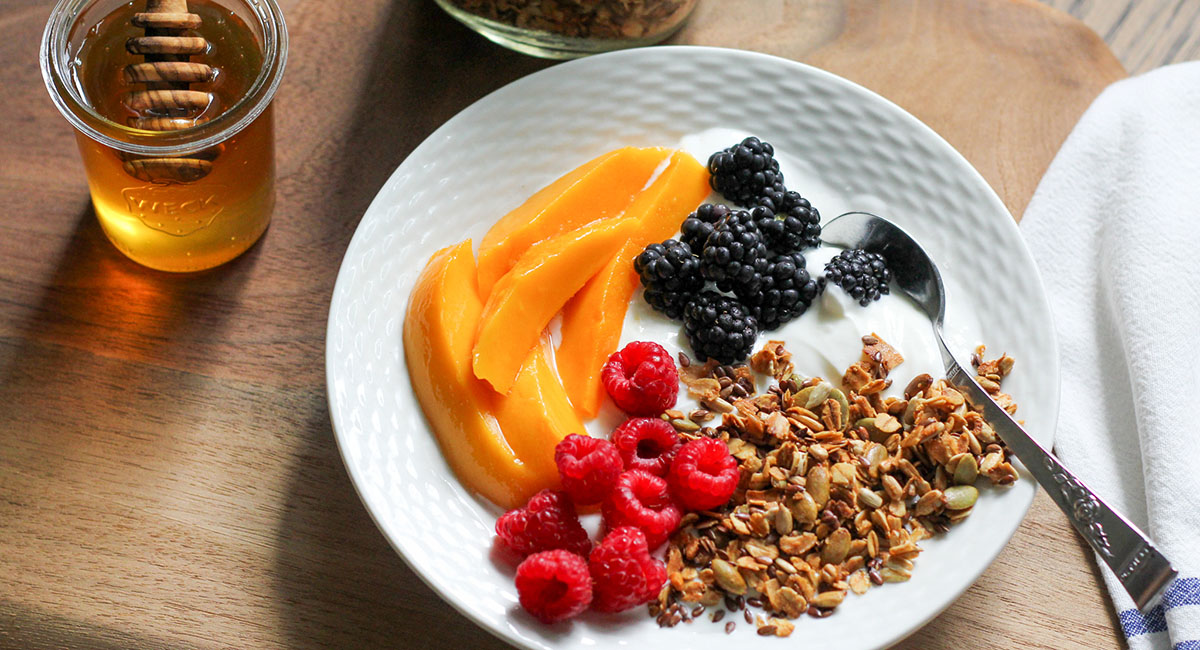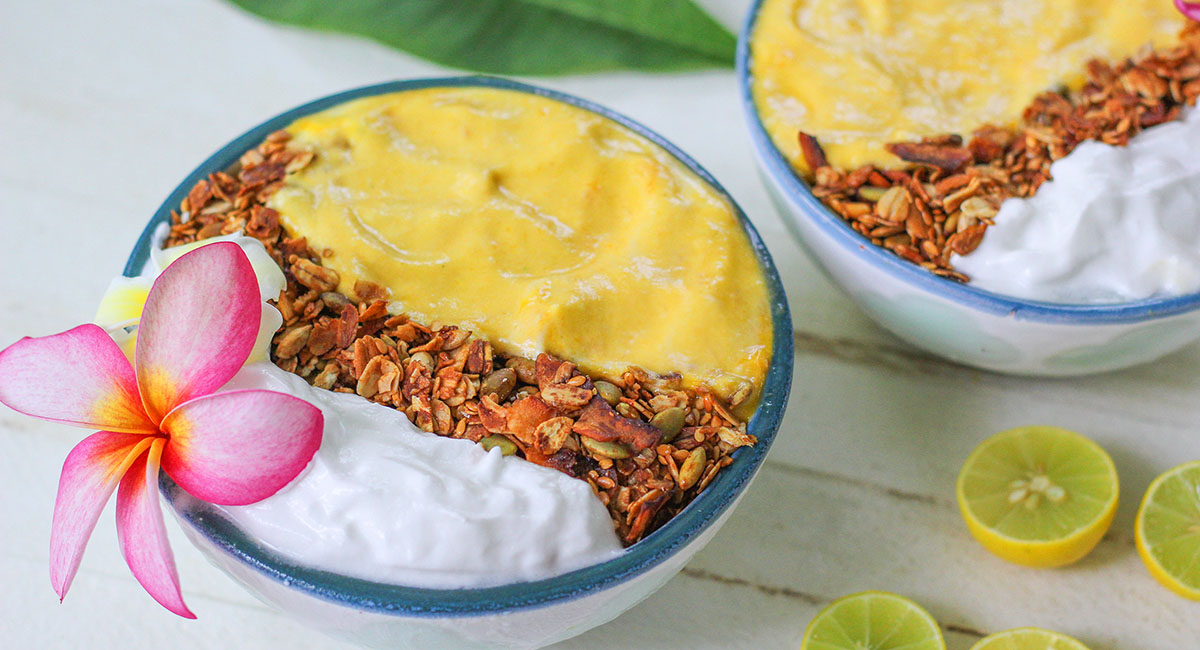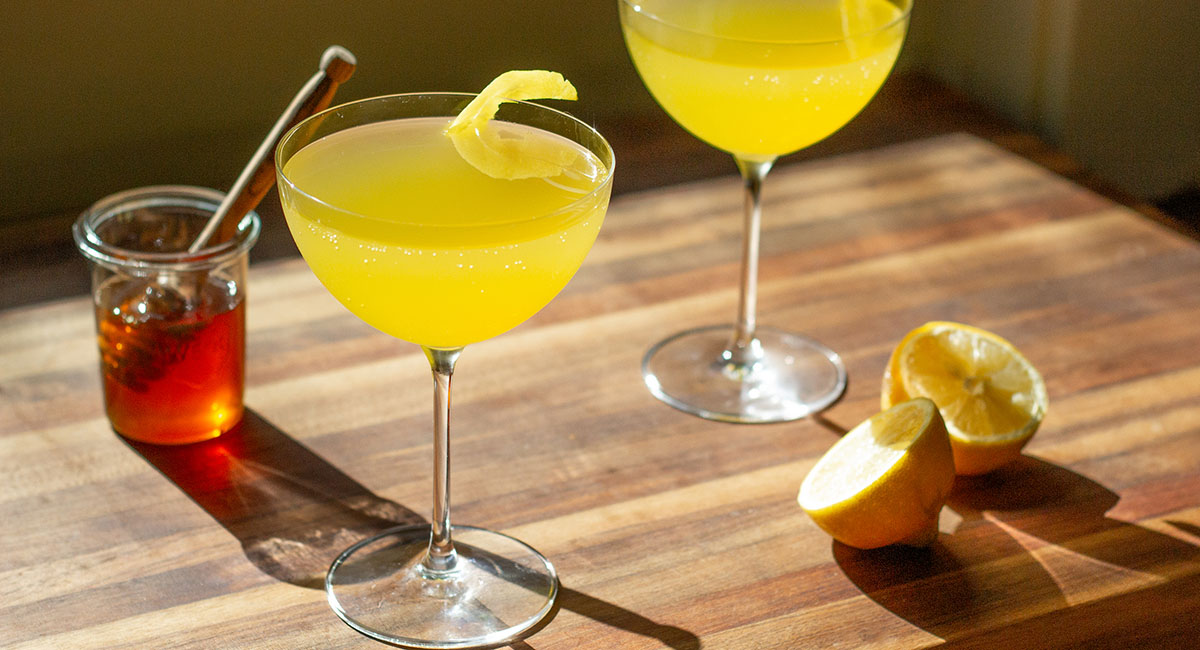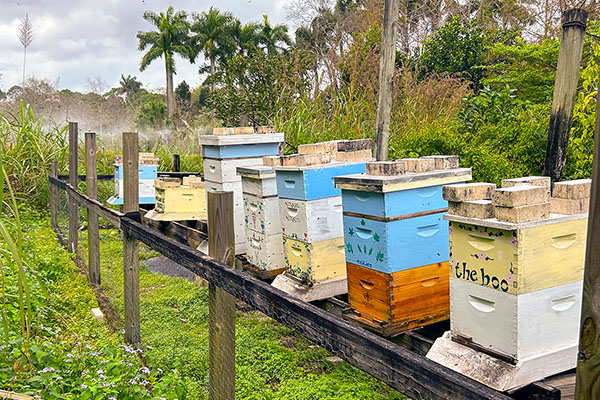Sweet Deal

Homemade granola sweetened with honey makes a simple and satisfying breakfast. DANIELLE ROSE PHOTOS
Local beekeepers help keep food growing and delicious
For as long as I can remember, my mom has made granola. She spends a full day, slowly toasting batches in the oven to fill jars that she shares with family and friends. It makes the house smell so good. It makes the best breakfast, and it’s tasty enough to eat alone as a snack. The key ingredient is excellent local honey, which you can taste in every bite.
Recently I was looking for good local honey so I could make a batch. Through my quest, I met two passionate beekeepers who sent me home with the best honey I’ve ever tasted — along with a wealth of information on what goes into making it.
At Mesozoic Landscapes in Lake Worth, I met Melissa Moyroud. After I bought a couple of jars of honey, she asked if I wanted to “meet her girls.” We walked through the lush garden to her hives, while she told me how she cares for her bees, from making sure they have a healthy diet to checking and treating them for parasites using organic methods. A few bees landed on us as we spoke, and she paused to watch my reaction. We’ve all heard bees can smell fear, so I took a deep breath and resisted the urge to swat them away. She said that, while it’s true you must stay calm around bees, it’s also important for beekeepers to select gentle queen bees so they don’t breed defensive colonies.
Moyroud described how bees are necessary pollinators for one-third of the foods we eat, including a wide variety of fruits, vegetables, nuts, herbs and spices. Habitat destruction, pesticide use, parasites and disease all threaten honeybees and, in turn, the entire global food industry. Beekeepers play a critical role in promoting healthy honeybee populations and fostering a strong honey industry. By working with farmers and managing hives in areas where crops are grown, beekeepers also help ensure that crops are adequately pollinated, leading to higher yields and better quality produce.
THE BEE LADY
I thought about the times I’ve hand-pollinated eggplant and dragonfruit flowers with a paintbrush, in hopes of a better crop. So I started wondering if I could get hives for my own backyard. Moyroud connected me with Sierra Malnove of Sierra’s Bees, which offers a variety of bee services for homeowners and businesses.
Malnove says she stumbled upon beekeeping by way of chickens. “When I moved to South Florida I was a stay-at-home mom, homeschooling my kids and I really wanted to have chickens,” Malnove says. “But in the city of Boca Raton, you are not allowed to have chickens. So I started doing a little research, and found in the state of Florida, we have the right to keep bees unless specifically prohibited by a homeowner’s association.” Hives must be registered with the Florida Department of Agriculture and Consumer Services.
She got her first colony in 2014 and quickly fell in love with them. Now she maintains hundreds of colonies from Broward to Indian River County, at golf and country clubs as well as private residences. “I’m like a pool guy,” she says. “I’m the bee lady. I come every month and take care of the bees, and I give the owners progress reports.” She bottles the proprietary honey under a private label at her honey house — a certified kosher, state-of-the-art facility. She also maintains 500 hives of her own on 12 acres in Palm Beach County, which she uses to make Palm Beach Creamed Honey: a unique style of crystallized honey with a spreadable consistency and infused with gourmet flavors.
Until I get my own colony, I’m supporting the bees by planting pollinator-friendly plants in my yard. For those who don’t have a yard, purchasing local honey is another way to support the beekeepers who are caring for the honeybees that are essential to much of the food we eat. Savor local honey with a batch of my mom’s granola, or mix it into cocktails like Bee’s Knees.

Homemade granola is a perfect topping for fruit, yogurt, and smoothie bowls.
Mom’s Granola
INGREDIENTS
3 cups whole rolled oats
1 1/2 cups dried unsweetened coconut flakes
1 cup raw hulled sunflower seeds
1 cup raw pumpkins seeds
1/2 cup raw whole flaxseed
1/2 cup honey
1/3 cup coconut oil
1/2 teaspoon salt
INSTRUCTIONS
Preheat the oven to 350. Line a 13×9 baking sheet with parchment paper. Combine oats, coconut, sunflower seeds, pumpkin seeds and flaxseed in a mixing bowl. Warm honey and coconut oil in a small saucepan. Stir in the salt. Drizzle the honey mixture over the dry ingredients and stir well. Spread the mixture evenly on baking sheet and bake, stirring every 10-15 minutes. If the coconut flakes begin to brown before the other ingredients, reduce the temperature to 325 and stir more often. Remove from the oven after about 45 minutes, or when the granola is evenly golden brown. Allow the granola to cool on the pan completely before pouring
into jars. It keeps well at room temperature for up to two weeks.
For longer storage, refrigerate or freeze. Yield: 4 pint jars

This Prohibition-era cocktail got its name from a popular expression of the time meaning outstanding.
Bee’s Knees
INGREDIENTS
2 ounces gin
1 ounce honey syrup
1 ounce fresh lemon juice
Lemon peel, for garnish
INSTRUCTIONS
Fill a cocktail shaker with ice. Pour in the honey syrup, lemon juice and gin. Shake until very cold. Strain into a martini or coupe glass. Use a channel knife or vegetable peeler to slice off a strip of lemon peel. Twist the lemon peel over the cocktail to release oils and drop it in. Cheers!
[Note: Sierra Malnove says combining equal parts honey and warm water makes a perfect substitute for simple syrup in any cocktail recipe, but the classic Bee’s Knees specifically calls for it.]
 Pollinator friendly plants
Pollinator friendly plants
Beekeeper Melissa Moyroud suggests Treasure Coast residents plant these natives to support pollinators.
COASTAL: dune sunflower, horizontal cocoplum,
saw palmetto, Jamaica caper, pigeon plum, sea grape,
sabal palm, buccaneer palm
INLAND COASTAL: mimosa, grayleaf, Simpson’s stopper, wild coffee, blackbead, crabwood, Bahama strongbark,
saw palmetto, green buttonwood, gumbo limbo,
sabal palm, paradise tree, mastic tree
INLAND: frogfruit, beautyberry, red tip cocoplum,
white stopper, dahoon holly, red maple,
coastal plain willow, royal palm

Danielle Rose
Danielle Rose is a seventh-generation Florida gardener and fisherwoman and descendant of the prodigious Summerlin family. A graduate of the University of Florida, she loves gathering friends and family around the table for homegrown food.




